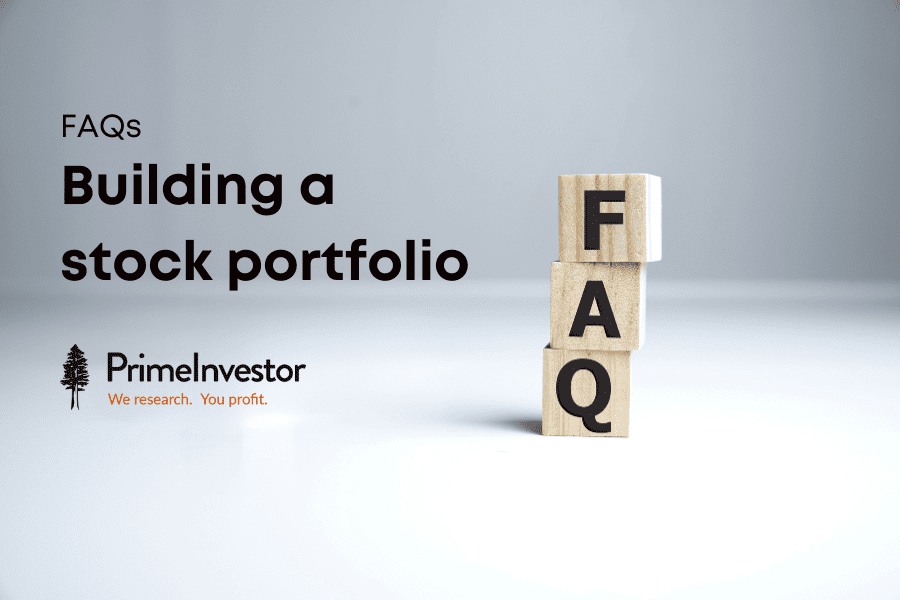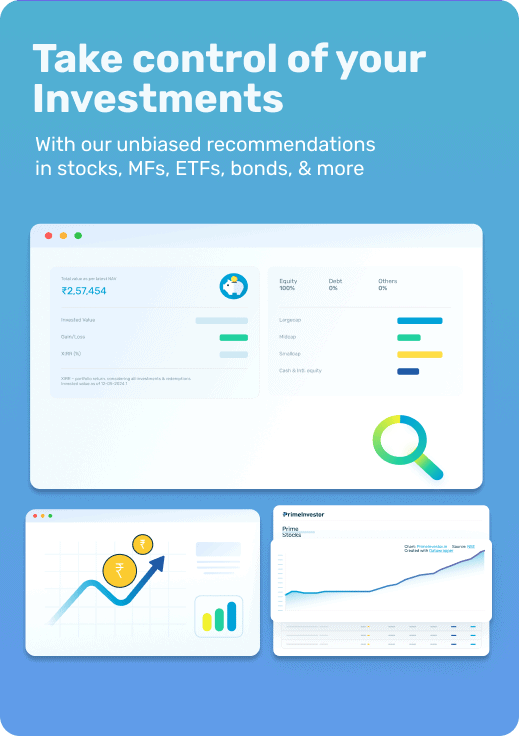In one of our webinars (in 2021) on how to build a stock portfolio we had many pertinent questions on the subject and we published the excerpts of the same. For the benefit of newer members, we are republishing this article again.

I now have an equity MF portfolio. Should I invest in stocks? Should I invest out of the surplus I save every month or should I invest my one-time bonuses and other windfalls?
Before investing your surpluses in equities, make sure you have essential elements in place like an emergency fund, life and health insurance to protect your wealth and secure your dependents. As timing makes a big difference to stock returns, it may be best not to invest a bonus or lumpsum in stocks at one go, as the timing may not be ideal. Park such money in a safe, ultra-short debt fund and move it into stocks when the prices are attractive.
Going by your views, stock investing seems to take full-time effort. What can people with other jobs do to learn it and build a portfolio?
Warren Buffett’s annual newsletters to Berkshire Hathaway shareholders offer a common sense perspective on stock investing. In the Indian context, blogs by the Fundoo Professor Sanjay Bakshi, Dr Vijay Malik and Valuepickr are some excellent ones to learn the basics of balance sheet analysis and stock selection.
Dr Aswath Damodaran’s blog is excellent for more seasoned investors to learn how to value companies. You should get into the habit of reading business newspapers and magazines to track and to be able to dissect corporate actions that have a bearing on companies you own. When you start buying equities, start small. Do a dry run with a model portfolio before you move on to the real thing.
My investment advisor is asking me not to invest in stocks directly and suggests index funds only. How can I convince him that Prime Stocks are worth investing in?
Direct stock investors can buy low and sell high, unlike investors in MFs who are influenced by actions of others, especially in open end funds. Individuals can invest in under-researched small and mid-caps with low liquidity or float, which institutions like MFs, owing to their size, can’t acquire.
What proportion of one’s wealth should be in a direct stock portfolio? How many stocks should I own?
Your equity allocation can be held through index funds, active equity funds and stocks. Index funds require very little intervention or tracking on your part and can be acquired through SIPs. Active equity funds require slightly more tracking but can be acquired through SIPs. Direct stocks will need continuous tracking and will need to be bought and sold at the right time for you to earn reasonable returns. You should therefore decide on your allocation to direct stocks within the equity portfolio, based on your ability to devote time and effort to doing this.
While there are no hard rules on this, owning 12 to 30 stocks in your portfolio gives you adequate diversification with monitorability. Mutual funds in India usually have stock weights ranging from 5-10 per cent in their top holdings.
Read this article on Building a Stock Portfolio to know more.
Are there any thumb rules on the ideal sector weights one must own? Should one decide on sector weights first before picking stocks?
While this is one approach to use, we believe that retail investors are likely to seek diversification more to reduce downside to their portfolios than to outperform an index. We think as a ballpark number, 20 percent can be the maximum weight to a single sector. While diversifying across sectors, do ensure you own sectors with different earnings drivers.
For instance, if you own sectors such as consumer appliances or FMCGs which are a domestic economy play, also own sectors like IT or specialty chemicals which are a global play. If you own weights in consumer-facing sectors, also try and own weights in industrial or B2B sectors. If you own high-beta sectors that are very reliant on the economy’s performance like corporate banks, do balance this out with sectors like healthcare or diagnostics which perform in an economic downturn as well.
No, it is not necessary to set sector weights before selecting stocks for your portfolio. Ideally, select stocks using a bottom-up process based on company financials and prospects. Then set sector caps to ensure that too many of your stock picks don’t come from the same sector.
How do I prepare an investment thesis?
Is it a good idea to do SIPs in stocks instead of making lumpsum investments? Should you buy stocks every month irrespective of valuation?
If we have good long-term stock holdings, is it a good strategy to keep topping them up by adding big chunks on dips? Should we simply withdraw 3-5 years before a goal?
If we can avoid falls like December 2007 to February 2009 by exiting before, our results would be so much better. Should we sell in mass panic scenarios and re-enter when the mayhem is over?
But then euphoric phases based on these indicators can stretch on for really long, as the current bull market has shown. Folks who looked at the traditional Nifty PE metric to exit equities in early 2015 have lost out on a 70% plus upside in the index.
Even if one manages to sell at a market top, re-entering at the bottom can prove daunting.
When markets correct, there are always plenty of naysayers predicting further gloom and doom. If you exit after the panic selling begins, you may be caught by surprise at how quickly a panic selling phase transforms into a bargain-hunting one where stocks begin to leap many percentage points in a few sessions.
In fact, rebounds from sharp corrections always tend to be characterized by sharp short-covering rallies which eventually turn into the beginning of the next bull market. If you’ve exited stocks during panic selling, it can be nearly impossible to get back into them before such a rebound materializes. Folks who’ve lived through market bottoms of March 2009 and March 2020 can confirm this!
How do we identify when a sector is out of favor to make a contrarian bet?
Different styles outperform at different stages of the stock market cycle. So why should one not switch between styles to make the most of every cycle?
What’s the best way to hold cash while you’re waiting for a buying opportunity?
How do rising bond yields impact stocks?
A higher return expectation from stocks means that investors would seek to buy stocks at a lower valuation than before, leading to selling pressure on stock prices. To put it more simply, assume you’re getting a 6% return from a 10-year government security today, you may be willing to buy stocks for 11 or 12% return expectation, given their higher risk of capital losses.
But should the government security yield rise to 8%, you’d begin to question whether you should own stocks at all, and you may sell some of your stocks and buy bonds. Even those who buy stocks would now seek a 13-14% return from them. This would require them to buy stocks at lower prices than today. This is the theoretical reason why rising yields lead to sell-offs in stocks.
Practically speaking, higher bond yields also lead to higher borrowing costs for companies which reduce their earnings and thus their attractiveness to equity investors. Higher bond yields reduce margins for investors who make leveraged trades. Foreign investors who are today borrowing at near zero rates in the Western world to invest in emerging market equities will find it less lucrative to do this, should bond yields in those countries rise.

